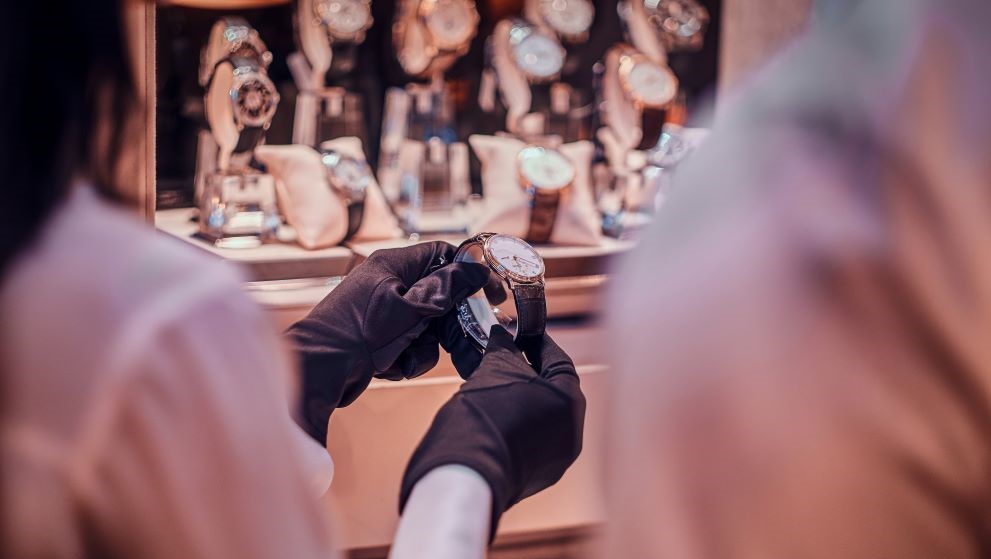The story of Japanese watchmaking is one of meticulous craftsmanship, pioneering technology, and an unwavering commitment to quality. From the early 20th century, in the early days of traditional timekeeping methods, to the global acclaim of today’s high-end Japanese watches and cutting-edge advancements of modern watchmaking, Japanese brands have consistently pushed the boundaries of precision and functionality.
This meticulous attention to detail has propelled Japanese-made watches to the forefront of the global market—with 49.9 million pieces exported from Japan in 2023 alone (source: Japan Clock & Watch Association)—garnering a reputation for enduring quality and timeless design.
This blog explores how Japan's rich heritage in watchmaking has evolved into a modern tale of innovation, detailing the logistical intricacies of exporting these masterpieces worldwide.
The intrinsic relationship between Japanese culture and watchmaking
The Japanese watch industry gained prominence by not just meeting but often exceeding international standards of precision. Watch brands in Japan the likes of Casio and Seiko are renowned for their dedication to craftsmanship, often utilising advanced technology that pushes the boundaries of what a wristwatch can achieve.
This dedication ensures that every piece made in Japanese watches stands out as a symbol of quality and reliability.
Unique innovations in Japanese watchmaking
In Japan, the concept of punctuality is deeply ingrained in the culture, making time a form of currency. The transport system in Japan is world-renowned for its to-the-minute accuracy, and passengers affected by any form of delay may request a train delay ticket to excuse themselves for being late to work.
This cultural emphasis on precision extends to the train conductors, who have historically been issued pocket watches to ensure accurate timekeeping. These railway pocket watches have since been improved upon countless times to produce precision timekeeping instruments for railways, manufactured for higher air tightness, greater durability against vibration, and superior overall reliability.
During the same period, the watchmaking industry faced a significant shift with the arrival of the Quartz Crisis — a period in the 1970s when traditional watchmakers struggled with the emergence of highly accurate and affordable quartz technology. This disruption opened doors for new players to enter the market. Capitalising on their expertise in electronics, Japanese watchmakers introduced affordable, mass-produced digital watches to the world, pioneering a new era in timekeeping.
Ensuring the safe passage of timepieces
Shipping high-value watches requires meticulous attention to detail. When shipping items like watches internationally, adopting best practices in packaging and logistics is crucial. The goal is to safeguard these precision timepieces against damage, loss, and theft during transit, ensuring they reach their destination in pristine condition.
Shipping methods
The choice of shipping method depends on several factors, including watch export value, desired delivery speed, and budget. Here's a breakdown of some common options:
- Standard Shipping: Often the most cost-effective option, standard shipping can be suitable for less expensive models. However, it lacks the robust security features required for high-end Japanese watches, making it less ideal for premium models.
- Expedited Shipping: For quicker delivery, expedited shipping offers a faster, yet more secure method. It reduces the time watches are in transit, potentially decreasing the risk of loss or damage.
- Courier Services: Utilising professional courier services to send high-value items like luxury watches ensures enhanced security. Couriers often provide stringent measures to protect against theft and damage.
- DHL Overseas Shipping: As a premium option, DHL overseas shipping includes comprehensive tracking and handling, ideal for the international shipping of valuable Japanese watches. This service ensures that watches are not only delivered swiftly but also with utmost care and security.
How to package a watch for shipping
Proper packaging is crucial to ensure a watch arrives safely. Here are some essential tips for packaging a watch for international shipping:
- Foam-In-Case: To maintain the integrity of the watch strap and the body, foam inserts can be used inside the case. This method supports the watch securely, preventing movement and absorbing shocks during transit.
- Bubble Wrapping: Encasing the watch box in bubble wrap adds an additional layer of protection. This ensures that even if the outer package is impacted, the shock absorption properties of the bubble wrap will protect the enclosed watch.
- Fragile Labels: Clearly marking the package with fragile labels informs handlers that the contents require careful handling. This simple step can significantly reduce the risk of damage during the shipping process.
Things to note when shipping valuable items
When sending out valuable items like Japanese watches overseas, it’s essential to consider shipping insurance, tracking capabilities, and secure logistics solutions. For added peace of mind when exporting high-value watches, consider these additional options:
- Shipping Insurance: Invest in comprehensive shipping insurance that covers the full value of your watch in case of loss or damage. Shipping insurance is highly recommended for Japanese watch exports.
- Tracking Information: Real-time tracking allows you and your customer to monitor the watch's shipment progress, providing transparency and reducing potential anxieties.
- Secure Logistics Solutions: Courier companies like DHL can provide additional security measures like tamper-evident packaging and 24/7 monitoring for high-value shipments. These options offer businesses greater control and peace of mind during the export process.






